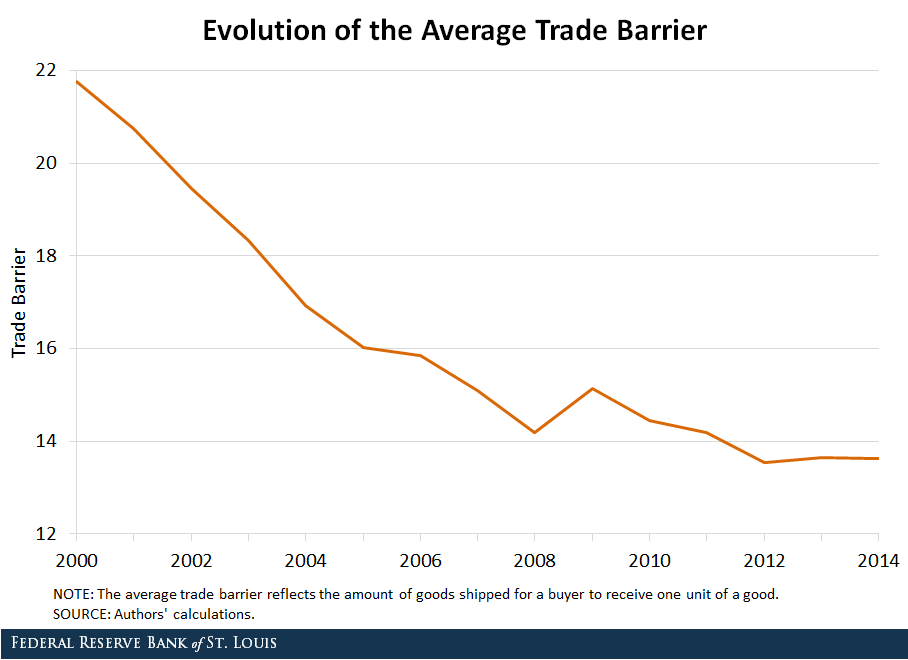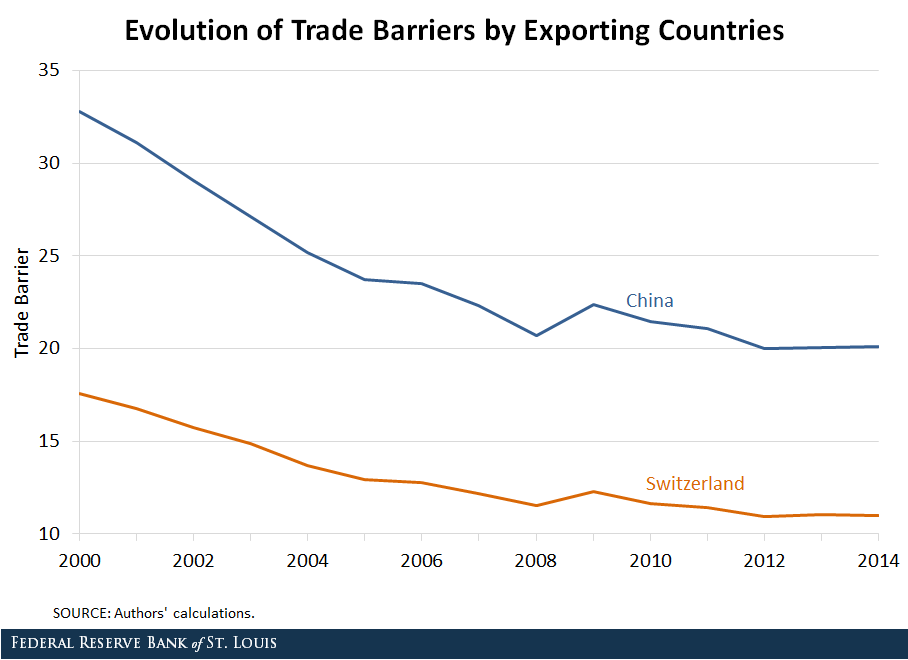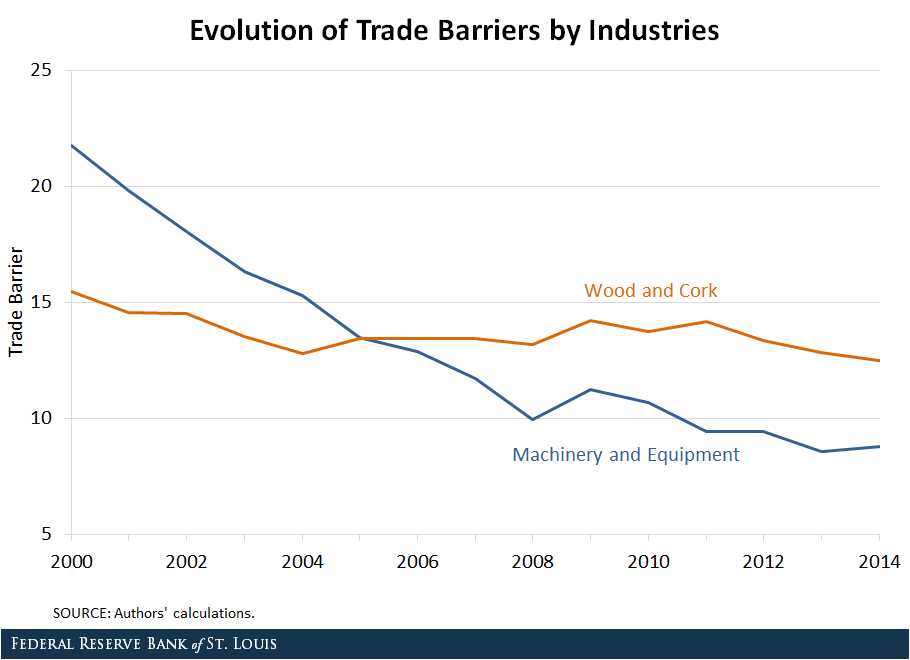What's Behind the Global Decline in Trade Barriers?

Economist Ana Maria Santacreu and former Senior Research Associate Heting Zhu explored this question in an Economic Synopses essay.
Decline in Trade Barriers
For their analysis, they used trade barrier data inferred from trade and production data for 42 countries and 20 industries over the period 2000-14. See Santacreu, Ana Maria and Zhu, Heting. “Domestic Innovation and International Technology Diffusion as Sources of Comparative Advantage,” Federal Reserve Bank of St. Louis Review, Fourth Quarter 2018, Vol. 100, No. 4. These trade barriers include both geographic barriers (such as distance, common language and border sharing) and policy barriers.
The authors found that trade barriers across all country pairs and industries declined during that period. In particular, they noted that the average trade barrier declined by 45 percent, as shown in the figure below.

Diverse Trends across Countries and Industries
“Despite trade barriers having, on average, declined over time, there is substantial heterogeneity in our estimated barriers at the country-pair and industry levels,” the authors wrote.
Among the countries pairs they examined, they found that:
- Those with the lowest trade barriers include U.S.-Canada, Belgium-Netherlands and Russia-Estonia.
- Those with larger barriers include Australia-Slovakia, Czech Republic-U.S. and Bulgaria-Canada.
When looking at industries, the authors found that:
- Trade barriers were largest for reproduction of recorded media; coke and refined petroleum products; and agriculture and mining.
- They were smallest for electrical equipment; rubber and plastic products; and textiles, apparel and leather.
Which Countries and Industries Contributed the Most?
Given the diverse trends at the country-pair and industry levels, Santacreu and Zhu then looked at which countries and industries have contributed the most to the decline in trade barriers.
Country Level
The authors noted that China was one of the countries in their sample that experienced the largest decrease in trade barriers from 2000-14, and Switzerland was one of the countries that experienced the smallest decrease.

They explained that China unilaterally liberalized its trade even before being admitted to the World Trade Organization. In addition, joining the WTO in 2001 helped China lower its trade barriers with other countries. See Lardy, Nicholas. “Trade Liberalization and Its Role in Chinese Economic Growth,” International Monetary Fund, November 2003.
On the other hand, Switzerland’s decrease was smaller than China’s, but Switzerland’s trade barrier was lower to begin with and remained lower in 2014, the authors noted.
However, they wrote, “Overall, trade liberalization has been improving across all countries.”
Industry Level
Among the industries they examined, the authors found that the largest decrease in trade barriers came from the machinery and equipment industry. The smallest decrease came from the wood and cork industry.

Conclusion
“In summary, we observe a persistent decline in trade barriers over the past two decades,” they wrote. “Identifying which countries and industries are behind this decline may shed light on the relation between trade and productivity growth at the country and industry level.”
Notes and References
1 See Santacreu, Ana Maria and Zhu, Heting. “Domestic Innovation and International Technology Diffusion as Sources of Comparative Advantage,” Federal Reserve Bank of St. Louis Review, Fourth Quarter 2018, Vol. 100, No. 4.
2 See Lardy, Nicholas. “Trade Liberalization and Its Role in Chinese Economic Growth,” International Monetary Fund, November 2003.
Additional Resources
- Economic Synopses: Which Countries and Industries Contributed the Most to the Decline in Trade Barriers Around the World?
- On the Economy: Who Are the U.S.’s Largest Trade Partners?
- On the Economy: What Drives Productivity Differences across Countries?
Citation
ldquoWhat's Behind the Global Decline in Trade Barriers?,rdquo St. Louis Fed On the Economy, Feb. 11, 2019.
This blog offers commentary, analysis and data from our economists and experts. Views expressed are not necessarily those of the St. Louis Fed or Federal Reserve System.
Email Us
All other blog-related questions

